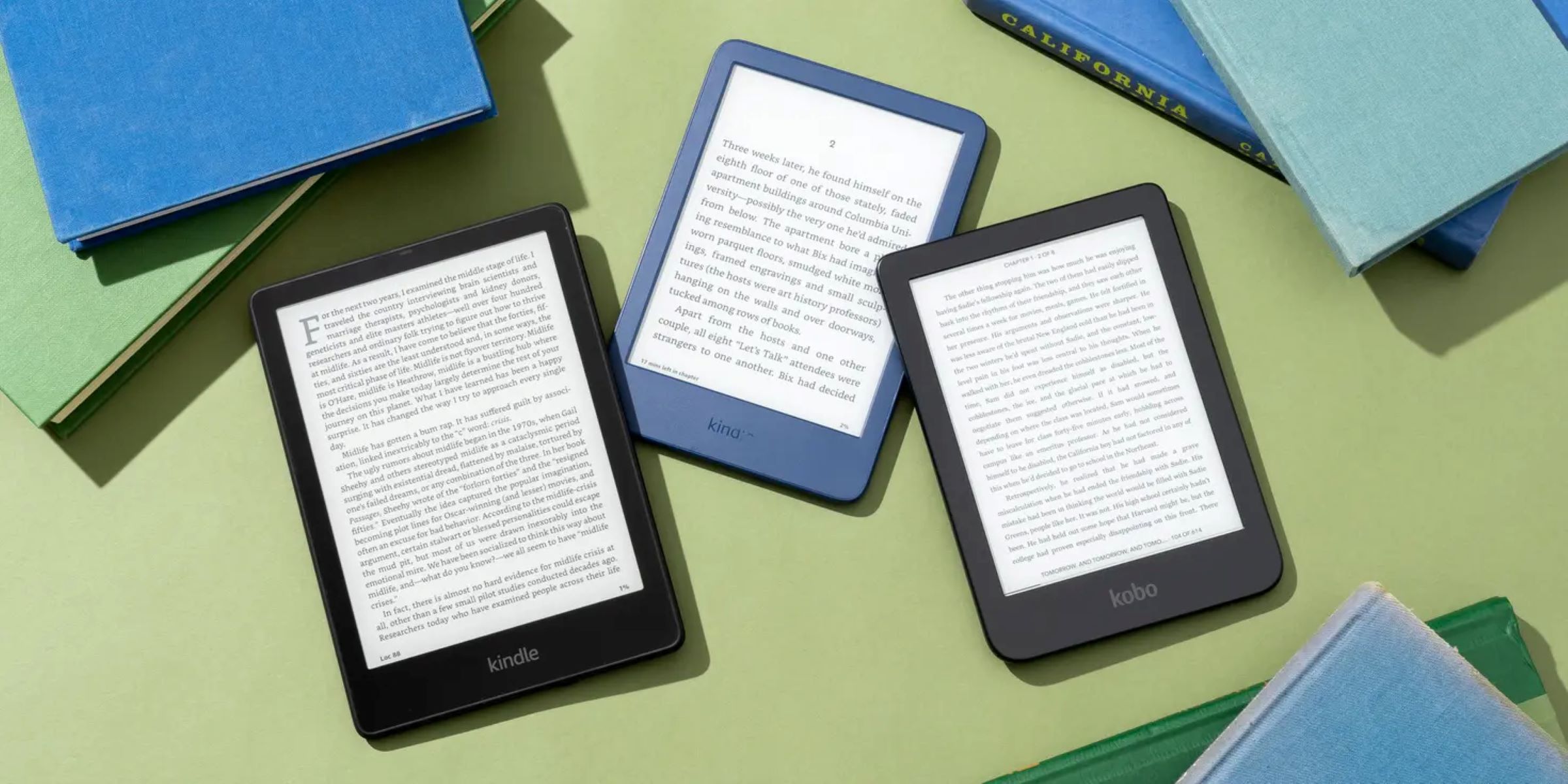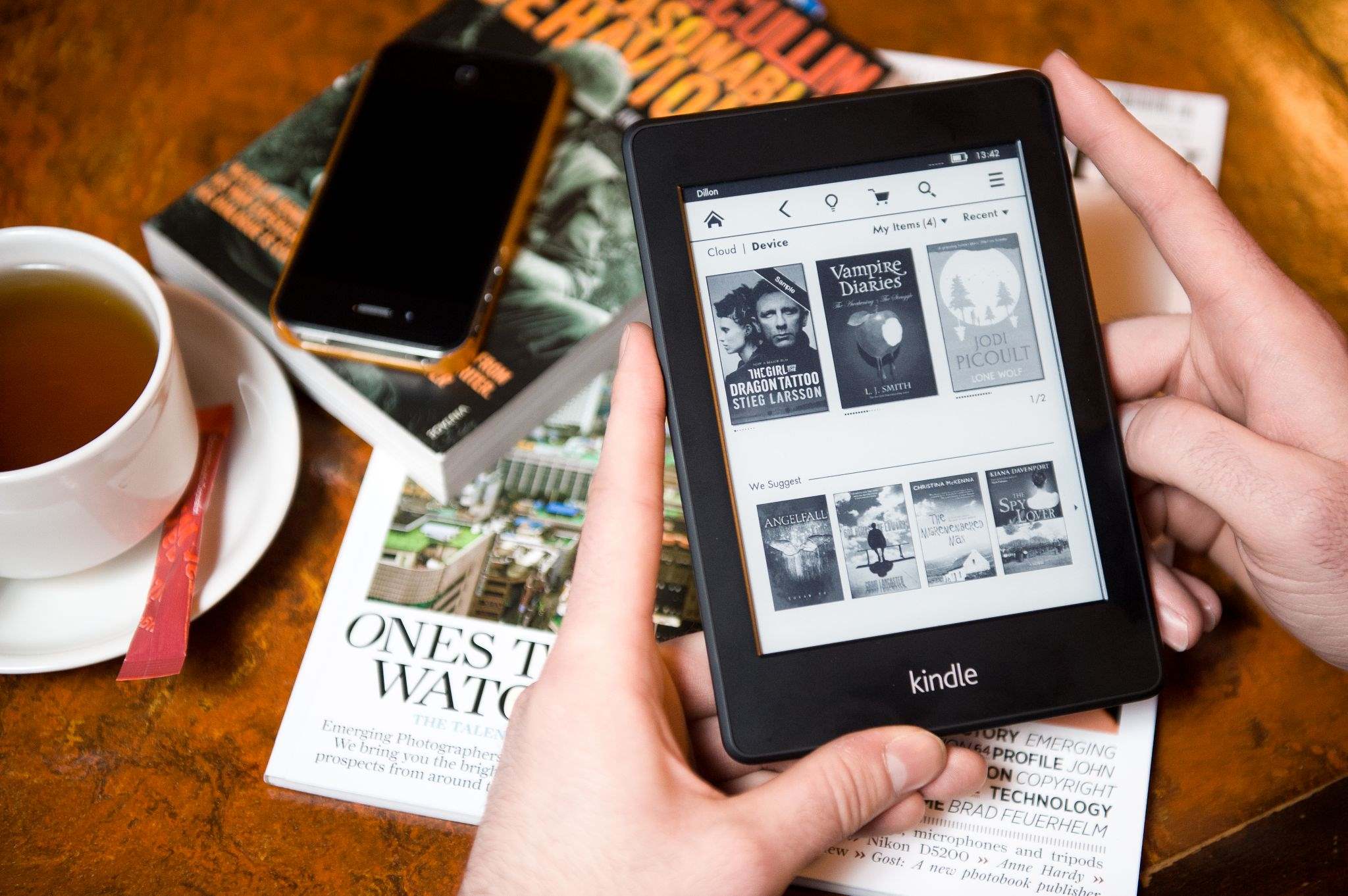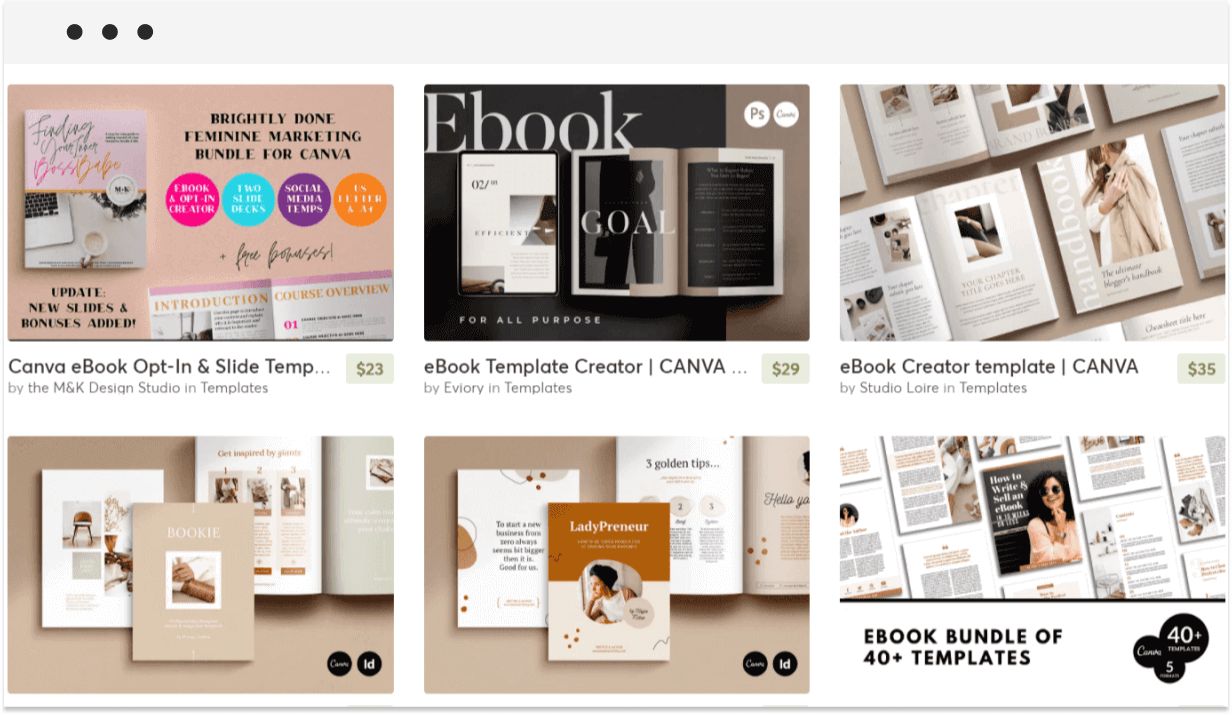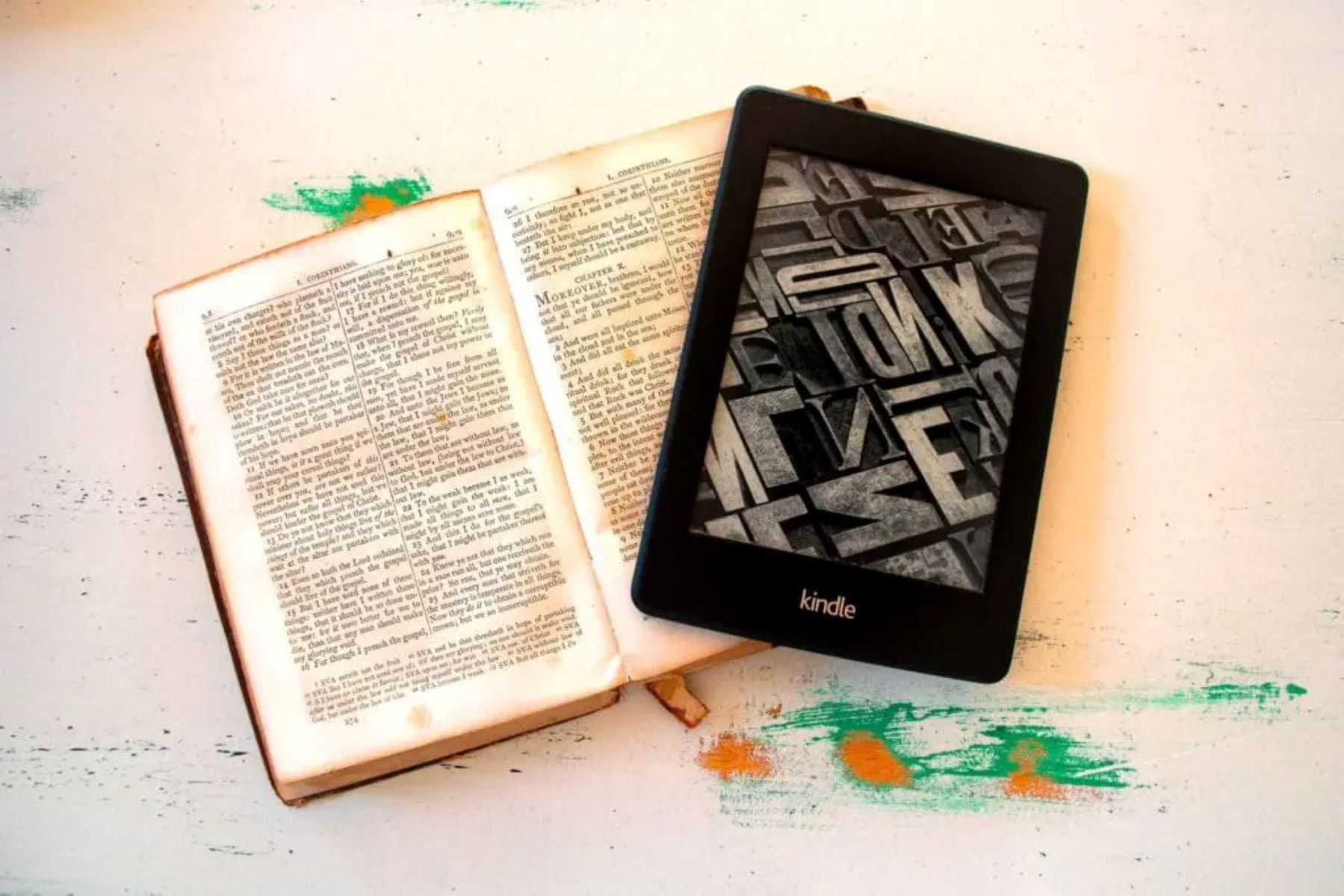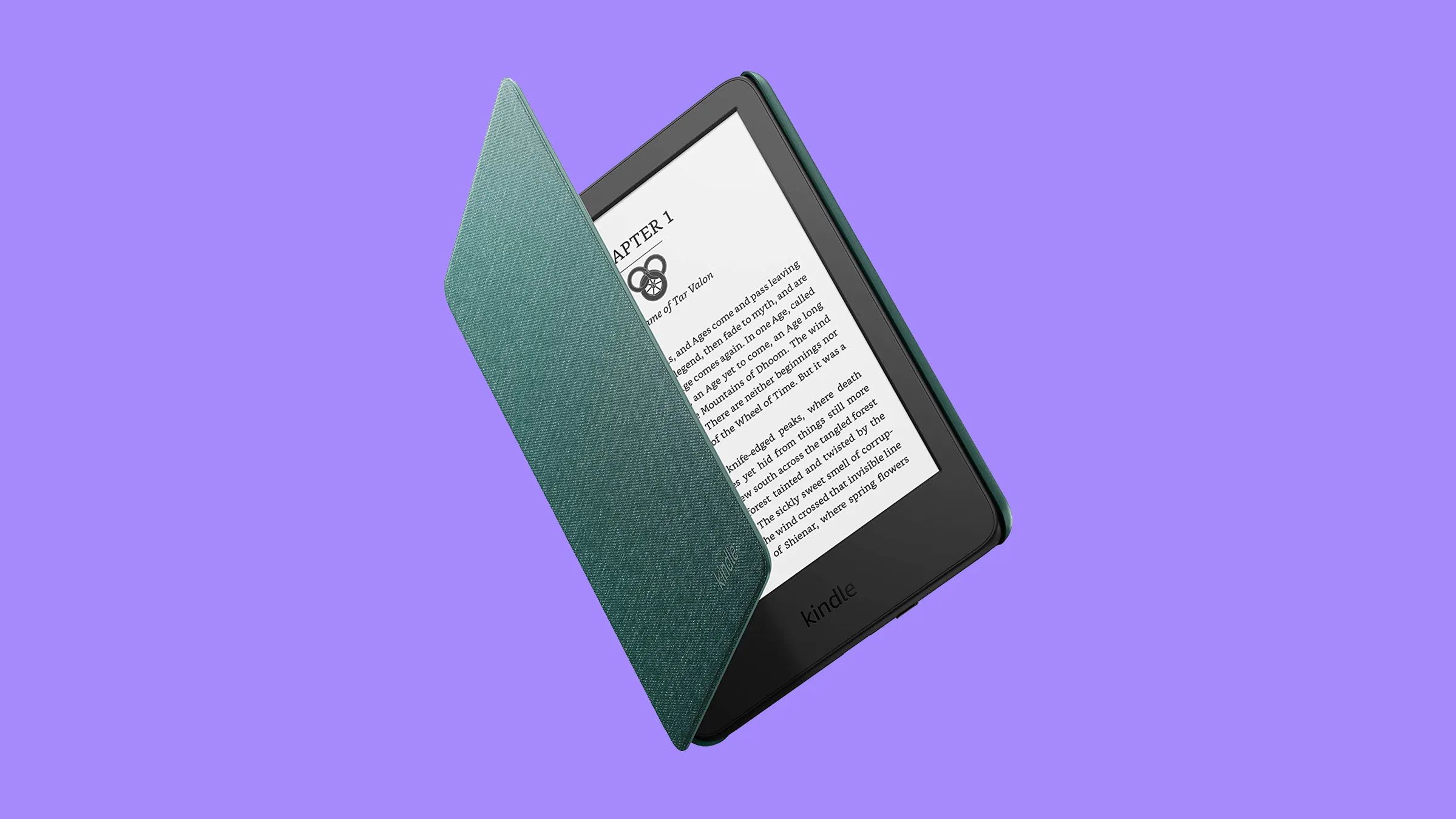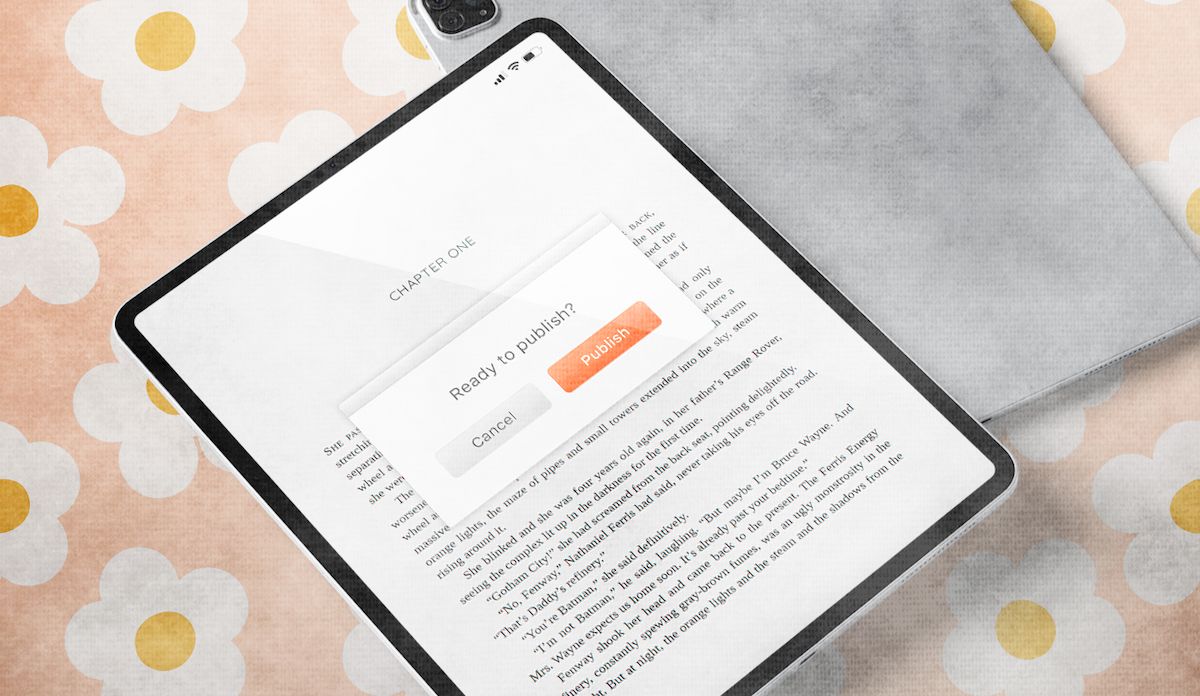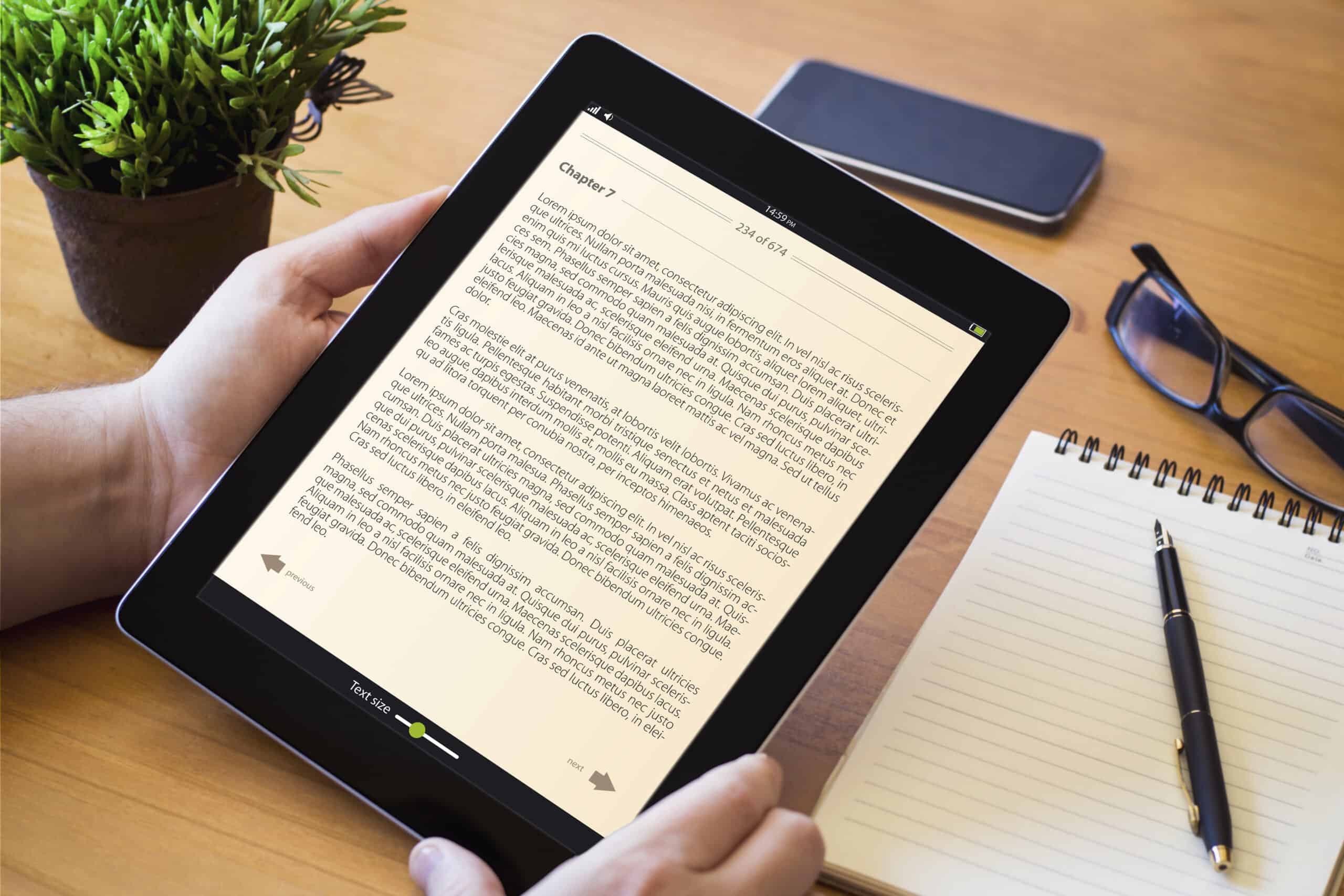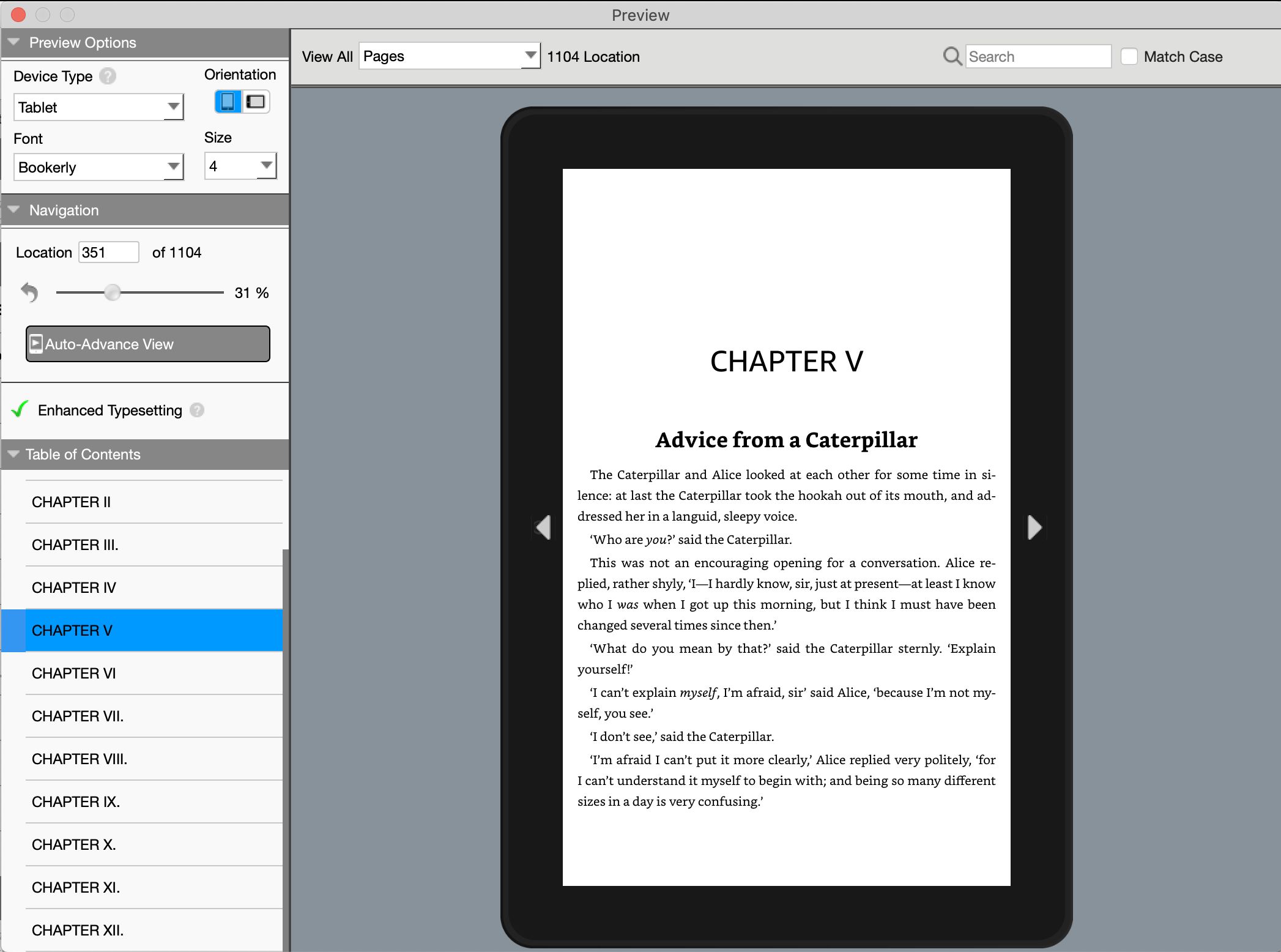Introduction
Welcome to the fascinating world of eBook readers! In this digital age, where technology reigns supreme, traditional books have taken a backseat to their electronic counterparts. eBook readers, also known as e-readers, have gained immense popularity among avid readers, providing a convenient and portable way to carry an entire digital library wherever you go.
But what exactly is an eBook reader? Simply put, it is a device designed to display electronic books, magazines, and other written content. It offers a range of features that mimic the experience of reading a physical book, such as adjustable font sizes, bookmarking, highlighting, and even built-in dictionaries.
The rise of eBook readers can be attributed to the numerous benefits they offer. Firstly, they eliminate the need to carry around heavy, bulky books, making it effortless to carry your entire library in your backpack or handbag. Whether you’re commuting, traveling, or simply lounging at home, you can effortlessly access a vast collection of reading material with just a few taps.
Another advantage of using an eBook reader is the ability to customize your reading experience. With adjustable font sizes, you can tailor the text to your preference, ensuring easy readability. Additionally, e-readers often provide adjustable lighting options, allowing you to read comfortably in any lighting condition, whether it’s a bright sunny day or a cozy, dimly lit room.
Moreover, eBook readers are eco-friendly. By going digital, you contribute to the conservation of trees and reduce carbon emissions caused by the production and transportation of physical books. It’s a small but significant step towards a more sustainable future.
When shopping for an eBook reader, you’ll come across a variety of options in the market. From basic entry-level devices to advanced models with advanced features, there’s something for every reader’s needs and budget. We’ll explore the different types of eBook readers in the next section to help you make an informed decision.
In this article, we’ll delve into the world of eBook readers, exploring how they work, the features to consider when buying one, popular brands in the market, and the pros and cons of using an eBook reader. By the end, you’ll have a comprehensive understanding of these devices and be ready to embark on your digital reading journey.
What Is an eBook Reader?
An eBook reader, also known as an e-reader, is a portable electronic device that allows users to read digital books, magazines, newspapers, and other written content. It is specifically designed to provide a seamless reading experience that closely resembles reading a traditional paper book.
At its core, an eBook reader is essentially a tablet-like device with a screen that displays text in a format optimized for reading. Unlike tablets or smartphones, however, eBook readers utilize electronic ink (e-ink) displays. This technology closely mimics the appearance of ink on paper, resulting in reduced eye strain and a more natural reading experience.
One of the key features of an eBook reader is its ability to store and organize a vast collection of digital books. With some devices offering internal storage capacities of up to several gigabytes, readers can carry thousands of books with them wherever they go. Additionally, many e-readers also support expandable storage through memory cards or cloud-based storage solutions.
Most eBook readers come with an integrated bookstore, allowing users to easily purchase and download books directly to their device. This eliminates the need to visit a traditional brick-and-mortar bookstore or wait for physical books to be delivered. Many eBook readers also offer extensive digital libraries, providing access to a wide range of free and public domain books.
One of the major advantages of using an eBook reader is its portability. These devices are lightweight and compact, making them perfect for on-the-go reading. Whether you’re traveling, commuting, or simply enjoying a day at the beach, you can have your entire library with you without the added bulk and weight of physical books.
eBook readers also offer a range of customizable features to enhance the reading experience. Users can adjust font sizes, font styles, line spacing, and margins to suit their preferences. Some devices even offer built-in dictionaries, highlighting, and note-taking capabilities for interactive reading and studying.
Most eBook readers have long battery lives, often lasting for weeks or even months on a single charge. This allows readers to enjoy uninterrupted reading sessions without the need to constantly recharge their devices.
In the next section, we will explore the benefits of using an eBook reader, shedding light on why these devices have become so popular among readers of all ages.
Benefits of Using an eBook Reader
Using an eBook reader offers numerous advantages and benefits that have contributed to their widespread popularity. Let’s take a closer look at some of the key benefits:
1. Portability: eBook readers are incredibly lightweight and portable, allowing you to carry an entire library with you wherever you go. Whether you’re traveling, commuting, or simply relaxing at home, you can have access to thousands of books at your fingertips.
2. Space-saving: Traditional books can quickly take up valuable space in your living area. eBook readers eliminate the need for physical storage, as all your books are stored digitally in the device’s memory or in the cloud. This means you can have an extensive library without cluttering your bookshelves.
3. Adjustable font sizes and styles: eBook readers offer the flexibility to adjust the font size and style according to your preference. This is particularly beneficial for individuals with visual impairments or those who find small print difficult to read. You can customize the reading experience to suit your comfort level.
4. Global access: With an eBook reader, you can access books from anywhere in the world. Whether you’re in a remote location or a different country, you can instantly download books and start reading without waiting for shipping or availability.
5. Eco-friendly: By opting for digital books instead of physical copies, you contribute to sustainability efforts. eBook readers help reduce the consumption of paper and significantly minimize carbon emissions associated with book production and distribution.
6. Built-in dictionaries and search functions: eBook readers often come with built-in dictionaries and search functions. This allows you to quickly look up unfamiliar words or phrases without the need for additional resources. It can enhance language learning and deepen your understanding of the content you’re reading.
7. Night mode and adjustable lighting: Many eBook readers have built-in night mode and adjustable lighting options. These features enable you to read in low-light conditions without straining your eyes. You can enjoy reading before bed or in dimly lit environments without disturbing others.
8. Annotation and note-taking: eBook readers allow you to highlight important passages, make annotations, and take digital notes. This feature is particularly useful for students or individuals who need to study and review content. It eliminates the need for physical highlighters and sticky notes.
9. Easy access to a wide range of content: eBook readers provide access to a vast collection of books, magazines, newspapers, and other literary content. Many devices have integrated bookstores where you can purchase and download books instantly. Some even offer subscription-based services that give you access to a library of books for a monthly fee.
10. Long battery life: eBook readers are designed to have long battery lives, often lasting for weeks or even months on a single charge. This makes them ideal for extended trips or situations where electricity is not readily available.
These benefits make eBook readers a convenient, versatile, and enjoyable way to indulge in your love for reading. The next section will delve into the different types of eBook readers available in the market, helping you determine which one suits your needs best.
Different Types of eBook Readers
There are several different types of eBook readers available in the market, each with its own unique features and specifications. Let’s explore some of the most popular types:
1. Dedicated e-ink eBook readers: These eBook readers feature black-and-white e-ink displays, which closely resemble the appearance of ink on paper. They are lightweight, easy on the eyes, and have long battery lives. Some prominent brands in this category include Amazon Kindle and Kobo.
2. Color e-ink eBook readers: While most e-ink readers display only black and white, some models offer color e-ink displays, bringing a new level of vibrancy to digital reading. These devices are great for reading comics, children’s books, and magazines with colorful illustrations. Examples include the PocketBook Color and Onyx Boox Nova2 Color.
3. Tablet-like eBook readers: These eBook readers have full-color LCD or LED screens, similar to tablets or smartphones. They offer a more versatile multimedia experience, with enhanced features such as internet browsing, app support, and multimedia playback. Popular examples include the Apple iPad and Samsung Galaxy Tab S7.
4. Hybrid eBook readers: These devices combine the functionality of a dedicated e-ink reader with additional features like a color LCD touchscreen or backlit display. This hybrid design allows readers to switch between e-ink for traditional reading and LCD for multimedia content. The Amazon Kindle Paperwhite and Barnes & Noble Nook GlowLight Plus are notable examples.
5. Smartphone and tablet apps: If you prefer reading on your smartphone or tablet, there are numerous eBook reading apps available for iOS and Android devices. These apps allow you to access your digital library and enjoy a seamless reading experience on your handheld device. Popular eBook reading apps include Amazon Kindle, Apple Books, and Google Play Books.
6. Audiobook-enabled eBook readers: Some eBook readers now have audio capabilities, allowing you to listen to audiobooks as well as read eBooks. These devices typically have built-in speakers or support for Bluetooth audio devices. Amazon’s Kindle Oasis, for example, has an Audible integration feature.
7. Large-format eBook readers: These devices are designed for individuals who require a larger screen size for enhanced readability. They are ideal for reading textbooks, graphic novels, and other content that benefits from a larger display. Notable examples include the Sony Digital Paper and Boox Max series.
When selecting an eBook reader, consider factors such as display quality, storage capacity, battery life, connectivity options, and compatibility with your preferred eBook format. Additionally, be sure to review customer reviews and compare prices to find the best eBook reader that suits your reading preferences and budget.
In the next section, we will explore how an eBook reader works and the underlying technology that powers these devices.
How Does an eBook Reader Work?
To understand how an eBook reader works, it’s essential to explore the underlying technology that powers these devices. Unlike traditional books, eBook readers utilize electronic displays and digital files to present written content. Here’s a breakdown of the basic workings of an eBook reader:
1. Electronic Ink (E-Ink) Display: One of the key components of an eBook reader is the electronic ink (e-ink) display. This technology mimics the appearance of ink on paper, providing a comfortable reading experience similar to that of a physical book. E-ink displays conserve power, allowing eBook readers to have exceptional battery life.
2. Digital Content Formats: eBooks are stored as digital files in various formats, such as EPUB, MOBI, PDF, and more. eBook readers support different file formats, allowing users to access a wide range of content. Some eBook readers have built-in software that can convert files from one format to another for compatibility.
3. Storage and Memory: eBook readers have dedicated storage capacity to store eBooks. The amount of storage can vary depending on the device, ranging from a few gigabytes to several hundred gigabytes. Additionally, many eBook readers support expandable storage through memory cards or cloud-based storage solutions.
4. User Interface: eBook readers have user-friendly interfaces that allow users to browse, search, and access their digital library. Depending on the device, users can navigate through their eBooks, adjust settings, and access additional features through physical buttons, touchscreens, or a combination of both.
5. Connectivity: eBook readers often have built-in Wi-Fi or 3G/4G capabilities, allowing users to connect to the internet and directly download eBooks from online stores. This ensures that users can easily replenish their digital libraries with new content without the need for a computer.
6. Annotation and Customization: eBook readers provide various customization options to enhance the reading experience. Users can adjust font sizes, font styles, line spacing, and margins to suit their comfort level. Some devices also offer features for highlighting text, making annotations, and taking digital notes.
7. Battery Life: eBook readers typically have excellent battery life. Electronic ink displays consume minimal power as they only require energy when the page is refreshed. This means that users can enjoy weeks or even months of reading without the need for frequent recharging.
8. Integrated Bookstore and Content Downloads: Most eBook readers have integrated bookstores where users can purchase and download eBooks directly to their devices. This eliminates the need for physical bookstores or online purchasing and waiting for delivery. Some eBook readers also offer access to free and public domain books.
By combining these technological components, eBook readers provide users with a seamless and enjoyable reading experience. With the ability to carry an entire library in a single device, easily customize the reading experience, and access a vast range of digital content, eBook readers have revolutionized the way we consume written material.
In the next section, we will delve into the features to consider when buying an eBook reader, helping you make an informed decision based on your reading preferences and requirements.
Features to Consider When Buying an eBook Reader
When purchasing an eBook reader, it’s important to consider various features to ensure that you choose a device that aligns with your reading preferences and requirements. Here are some key features to consider:
1. Display Quality: The display is a critical aspect of an eBook reader. Consider factors such as screen size, resolution, and pixel density. A high-resolution display with crisp text and sharp images will enhance your reading experience.
2. Compatibility: Ensure that the eBook reader supports the file formats you intend to use. Look for compatibility with common formats such as EPUB and PDF. Some devices also support specific file formats like MOBI or AZW for Kindle readers.
3. Storage Capacity: Assess your storage needs based on the number of eBooks you plan to carry. Consider whether the device has sufficient internal storage, as well as the option for expandable storage through memory cards or cloud-based solutions.
4. Battery Life: Look for an eBook reader with a long battery life, especially if you intend to use it for extended reading sessions or while traveling. Look for devices that offer weeks or even months of battery life on a single charge.
5. Connectivity: Check whether the eBook reader has Wi-Fi or 3G/4G connectivity options. Wi-Fi allows you to connect to the internet and access online bookstores, while 3G/4G enables you to download eBooks on the go without relying on Wi-Fi networks.
6. User Interface: Consider the device’s user interface. Decide whether you prefer a touchscreen, physical buttons, or a combination of both for navigation. Ensure that the interface is intuitive and easy to use.
7. Customization Options: Look for customization features that allow you to adjust font sizes, font styles, line spacing, and margins based on your reading preferences. Annotation, highlighting, and note-taking capabilities are also desirable for those who like to interact with the content.
8. Additional Features: Some eBook readers offer additional features like built-in dictionaries, search functions, integrated lighting for reading in the dark, water resistance, or audiobook playback. Consider these features based on your personal reading habits and preferences.
9. Price: Set a budget and compare the prices of different eBook readers. Take into account the features offered and the overall value for money. Remember that higher-priced models may offer more advanced features and higher-quality displays.
10. Reviews and Recommendations: Before making a final decision, read reviews and seek recommendations from other users. Learn about the experiences of others to gain insights into the performance, durability, and overall satisfaction level with the device.
Considering these factors will help you select an eBook reader that best meets your needs and preferences. Take the time to explore different options and compare their specifications and features to make an informed purchasing decision.
In the next section, we will discuss popular eBook reader brands in the market to help you narrow down your choices further.
Popular eBook Reader Brands
When it comes to eBook readers, several well-known brands have made a mark in the market, offering a range of devices with unique features and capabilities. Let’s take a look at some popular eBook reader brands:
1. Amazon Kindle: Amazon Kindle is one of the most recognized and widely used eBook reader brands. Known for its extensive range of devices, including the entry-level Kindle, the Paperwhite, the Oasis, and the Kindle Kids Edition, Amazon offers a variety of options to suit different reading preferences and budgets.
2. Kobo: Kobo is another prominent brand in the eBook reader market. Offering a wide selection of devices like the Kobo Clara HD, Kobo Forma, and Kobo Libra H2O, Kobo is known for its user-friendly interface, extensive storage capacity, and support for a range of file formats.
3. Barnes & Noble Nook: Barnes & Noble Nook is a popular eBook reader brand, particularly in the United States. The Nook GlowLight Plus offers a compact design, a front-lit display, and significant storage capacity. The Nook also provides access to an extensive digital library and supports various file formats.
4. PocketBook: PocketBook is a European brand that has gained a strong following in the eBook reader market. Known for their wide range of devices such as the PocketBook Touch HD 3 and PocketBook InkPad 3, PocketBook offers advanced e-ink displays, expandable storage options, and support for multiple file formats.
5. Sony Digital Paper: Sony Digital Paper focuses on large-format eBook readers, designed primarily for professionals and students. The Sony Digital Paper lineup, such as the DPT-RP1 and DPT-CP1, features high-resolution displays, note-taking capabilities, and the ability to view PDF documents in their original format.
6. Onyx Boox: Onyx Boox is a brand that offers eBook readers with innovative features. Their devices, like the Onyx Boox Nova series and the Onyx Boox Note series, boast large screens, note-taking functionalities, and even color e-ink displays in some models.
7. Remarkable: Remarkable is known for its Remarkable 2 device, which combines the functionality of an e-reader and a digital note-taking tablet. It features a paper-like display, excellent note-taking capabilities, and the ability to read and annotate PDF and ePUB documents.
These are just a few of the popular eBook reader brands available in the market. Each brand offers its unique set of features, software, and ecosystem. Be sure to explore the specific models offered by these brands and consider your personal preferences and reading habits when choosing the right eBook reader for you.
In the final section, we will discuss the pros and cons of using an eBook reader to provide you with a comprehensive understanding of these devices.
Pros and Cons of Using an eBook Reader
Using an eBook reader offers numerous advantages that have made these devices increasingly popular among readers. However, like any technology, there are also some drawbacks to consider. Let’s explore the pros and cons of using an eBook reader:
Pros:
1. Portability: eBook readers are lightweight and compact, allowing you to carry an extensive library in a single device. This makes it convenient for traveling, commuting, or simply reading on the go.
2. Space-saving: Digital books take up no physical space, eliminating the need for bookshelves or storage for physical copies. This is especially useful for those with limited living spaces.
3. Adjustable font sizes and styles: eBook readers allow users to adjust font sizes to enhance readability, making it easier for those with visual impairments or reading difficulties to enjoy books comfortably.
4. Global access: With an eBook reader, you have instant access to a vast library of books available for purchase or download from anywhere in the world. You can explore and discover new titles without waiting for physical delivery.
5. Eco-friendly: eBook readers contribute to environmental sustainability by reducing paper consumption and the carbon footprint associated with physical book production and transportation.
6. Customization options: eBook readers allow users to adjust settings such as font styles, margins, and screen brightness to suit their reading preferences. Some devices also offer annotation and note-taking features.
7. Built-in dictionaries and search functions: eBook readers often come with built-in dictionaries, making it easy to look up definitions and unfamiliar words. Many devices also have search functions, allowing you to quickly find specific content within eBooks.
Cons:
1. Limited tactile experience: Unlike physical books, eBook readers lack the tactile experience of flipping pages and feeling the weight of a book in your hands. Some readers may miss the sensory aspect of reading a physical book.
2. Screen fatigue: Continuous reading on a screen can cause eye strain and fatigue for some individuals, especially when reading for long periods. Taking regular breaks and adjusting screen brightness and font sizes can help mitigate this issue.
3. Dependency on battery life: eBook readers require charging to function, and users need to ensure they have sufficient battery life for uninterrupted reading sessions. Carrying a charger or power bank may be necessary when traveling or away from power sources for an extended period.
4. Digital distractions: eBook readers often have internet connectivity and other apps, which can be distracting and may interrupt the reading experience. Maintaining focus on reading and minimizing distractions can help mitigate this issue.
5. Limited availability of some titles: While eBook stores offer a wide range of titles, some books, especially older or rare editions, may be unavailable in digital format. Additionally, some publishers may restrict access to eBooks or delay their release compared to physical copies.
6. Compatibility issues: Different eBook readers support various file formats, and not all eBooks are compatible with every device. Users should ensure their chosen eBook reader is compatible with the file formats they intend to use.
Consider these pros and cons when deciding whether using an eBook reader aligns with your reading preferences, lifestyle, and individual needs. While eBook readers offer many benefits, it’s essential to evaluate the potential disadvantages to make an informed decision.
Now that we’ve explored the pros and cons of using an eBook reader, you are equipped with the knowledge to make an informed decision about incorporating these devices into your reading routine.
Conclusion
eBook readers have revolutionized the way we read and interact with written content. These portable devices offer a multitude of benefits, including portability, space-saving, customization options, and global access to a vast library of digital books. eBook readers also contribute to environmental sustainability by reducing paper consumption.
When purchasing an eBook reader, it’s crucial to consider factors such as display quality, storage capacity, battery life, connectivity options, and compatibility with file formats. Popular eBook reader brands like Amazon Kindle, Kobo, Barnes & Noble Nook, PocketBook, Sony Digital Paper, Onyx Boox, and Remarkable offer a diverse range of devices to suit different needs and preferences.
Using an eBook reader is not without its drawbacks. Some individuals may miss the tactile experience and the sensory aspects of reading physical books. Screen fatigue and dependency on battery life are valid concerns that need to be addressed. Additionally, limited availability of certain titles in digital format and compatibility issues with file formats are factors to consider.
Despite the cons, the pros of using an eBook reader far outweigh the disadvantages for many readers. The convenience, versatility, and customization options make digital reading an attractive option in today’s digital age. By adapting to this technology, readers can enjoy endless literary adventures while minimizing physical storage and reducing environmental impact.
Whether you’re a voracious reader or someone who enjoys occasional reading, eBook readers offer an immersive and accessible way to indulge in your love for books. By carefully considering the features, brands, and pros and cons discussed in this article, you can make an informed decision and find the perfect eBook reader that suits your reading preferences and lifestyle.
So, go ahead and embark on your digital reading journey with an eBook reader that will accompany you on countless literary escapades.







